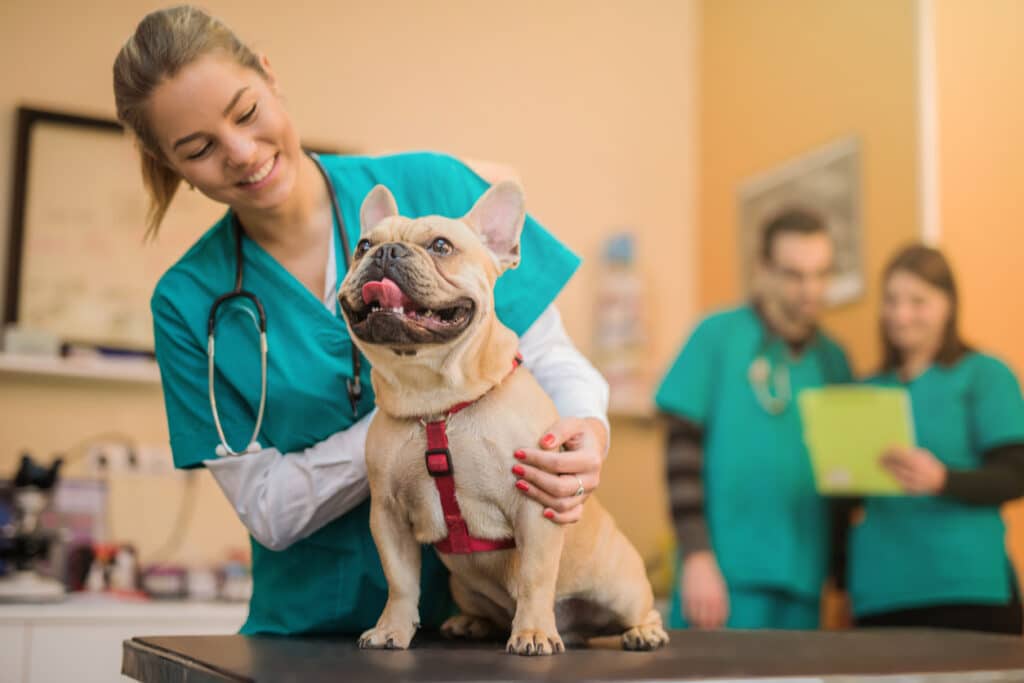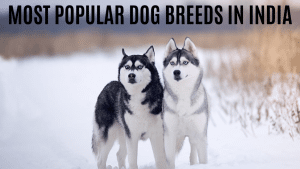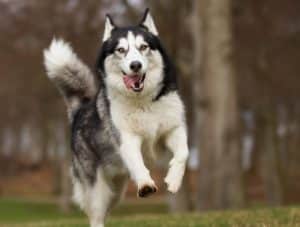Anal Gland Problems in Dogs – Your pet dogs need more than just your love and attention; they also require various medications to be administered on time. In both humans and dogs, the anal glands serve a critical role in removing waste fluids and other toxic substances from their bodies.
Absolutely! Here’s a breakdown of anal gland problems in dogs, how to express them safely, and a key takeaway:
Understanding Anal Gland Issues in Dogs
- What are anal glands? Small sacs located on either side of a dog’s anus. They produce a unique, pungent scent dogs use for communication and territory marking.
- Problems arise when: Glands don’t empty naturally during bowel movements, leading to impaction, discomfort, and potential infection.
- Common causes:
- Soft stools (from diet or diarrhea)
- Obesity
- Allergies
- Skin infections
- In rare cases, tumors
Signs Your Dog Needs Their Glands Expressed
- Scooting their bottom on the ground
- Excessive licking or biting of the anal area
- Foul odor
- Swelling or redness near the anus
- Straining to defecate
How to Express Dog Anal Glands (Caution Advised)
While you can do it at home, it’s often safer and more comfortable for your dog to have a vet or groomer do it. If you choose to do it yourself:
-
Preparation:
- Wear disposable gloves
- Use a lubricant (Vaseline is okay)
- Have paper towels and anti-odor spray ready
- Enlist another person’s help to hold your dog still
-
Locate the glands: At approximately 4 o’clock and 8 o’clock positions around the anus.
-
External Expression:
- Lift the tail.
- Gently place a lubricated finger on one gland.
- Apply gentle upward and inward pressure, as if pinching the gland.
- Repeat on the other side.
-
Internal Expression (More Difficult):
- Insert your lubricated index finger into the anus.
- Locate the gland with your finger and thumb.
- Gently squeeze and milk the fluid out.
-
Cleanup: Thoroughly clean the area with soapy water to prevent infection.
Important:
- If it’s painful for your dog, stop and consult a vet.
- Rough handling can rupture the gland, requiring medical attention.
- Frequent expression can worsen problems in the long run.
When to Seek Veterinary Help
- If you’re uncomfortable doing it yourself.
- If your dog shows signs of pain or aggression.
- If glands are very swollen, red, or discharge is bloody or pus-like (sign of infection).
- If problems keep recurring (may need underlying issues addressed).
How to Prevent Anal Gland Problems
- High-fiber diet: Promotes firm stools for natural emptying of glands.
- Weight management: Obesity makes gland expression difficult.
- Address underlying issues: Allergies, infections, etc., can contribute to problems.
Best Dog Food for Anal Gland Issues
Look for foods that:
- Are high in fiber (whole grains, vegetables)
- Contain easily digestible ingredients
- Are formulated for your dog’s specific size and breed
Key Takeaway
Anal gland problems are common in dogs Knowing the signs, how to express them (if necessary), and when to see a vet is crucial for your dog’s comfort and health. Prevention through a healthy diet and addressing underlying causes is always the best approach.
Additional Notes
- Some groomers offer anal gland expression services.
- Never force the process. If your dog resists, a professional is your best option.
- Consult your vet before making major dietary changes to treat gland issues.
Why Do Dogs Have Anal Sacs?
Dog anal sacs are the glands that produce a scent, which can be utilized to communicate with other dogs while they are socializing with them. This group of muscles can be found in the anal glands, on the left and right sides of each gland, respectively, and within the glands themselves. As a result, a distinct and unpleasant odor is left behind when your dog defecates, making it tough to ignore the odor.
Another aspect that adds to the dog’s use of anal glands is its fear. For instance, you may have noticed or smelled a pungent stench during a violent storm or thunderstrike; this odor is caused by the dogs’ fear and anxiety due to something they are not aware of and are truly terrified of.
The dogs’ fear and anxiety are expressed through the use of odor emitted from their normal anal gland to communicate their fear. An increase in the hormone levels in the glands occurs gradually over time, allowing the dog to use them as and when they are necessary again.
Is It Necessary to Express Anal Glands of Dogs?
A vast majority of dogs cannot empty the fluids from their anal glands through their anal sacs, which means they will most likely suffer from various critical health problems due to this inability.
For the glands to operate effectively, they must be expressed in the proper method, whether you do it yourself or engage a skilled vet to do it for you. If you try to do it yourself, follow the instructions carefully. Make careful that the glands are expressed correctly if you opt to do it yourself.
Anal gland expression may make some dogs more comfortable. It may also make them more resistant to internal infections and various other ailments if their anal glands are expressed.
When the harmful material has been removed from the dog’s body, it will experience immediate relief. Then, depending on the conditions, it may either enjoy playing with you or may remain active throughout the day.
How Often to Express Dog Glands?
Each year, or even every month in some cases, dogs’ anal glands are manually expressed, which is not uncommon for them to undergo. So, whatever time of year your dog needs glandular expression, the most important thing to consider is whether or not they require it in the first place.
The anal glands, which are positioned on either side of the dog’s anus, serve the goal of releasing a distinctive odor into the dog’s feces when it craps. So, every time a dog defecates, these fluid-filled glands, found at the bottom of the body of canines, get evacuated.
Those of other dogs’ glands, on the other hand, may not drain properly, causing them to get clogged and irritated as a result. During extreme circumstances, the glands may become entirely ruptured.
The necessity of expressing the anal glands varies from one dog to another. The overall functioning of the anal glands in some dogs may be less than optimal compared to the overall functioning of the anal glands in other animals, which is why some dogs may not require the expression of the anal glands.
These expressions should only be performed when and where the dogs require them. In addition, expressing the anal glands without a function may result in substantial injury to the anal sacs, resulting in occlusion of the feces-producing duct during defecation if done repeatedly.
Before engaging in any form of activity with your dog, you must seek expert medical guidance if it is suffering from any long-term ailments.
That the dog may be experiencing additional challenges and injury, which may have a harmful influence on the overall functioning of the body, is indicated by this finding.
A professional vet should be consulted when diagnosing your dog, as they will be able to provide your dog with prompt and efficient care.
How to Tell if The Dog Needs Glands Expressed?
It is easy to tell what a dog wants to do or say when it releases fluid from its anal glands. Dogs send many indications when they are in this mood.
While rubbing its butt on the floor, carpet, or any rough surface is one of the most apparent signs of an upset canine, the dog may also overdo it when it comes to licking its anal glands, which can be very upsetting.
A foul odor may also indicate that it’s time to release the anal gland material, and there may be some residue left behind. These signs indicate the dog’s desire to have its anal glands emptied.
Because of the following circumstances, the dogs require the manual expression of their anal glands:
Size of Various Breed Dogs
A small breed’s anal gland muscles get inflamed because of their smaller anal sacs. It creates issues in ejecting the fluids naturally from their body.
Fecal Matter
Anal gland muscles cannot be compressed, and the fluid-filled anal sacs can’t be evacuated while their feces content is loose.
Food Habits
While compressing the anal glands, dogs who eat fibrous foods tend to be healthier and better at flushing out anal sac fluid. And those that don’t will face issues in releasing wastes from their anal glands.
Obese Nature
Numerous health problems might arise in obese dogs because they cannot get rid of their feces and anal sac fluid.
These signs make it simple to determine whether or not a dog wishes to express anal glands.

Causes of Anal Gland Problems in Dogs
There is a range of causes that can contribute to anal gland problems in dogs, including the following.
Diarrhea
Due to diarrhea, the dog cannot excrete the fluid built up in its anal sacs, resulting in an infection of its anal glands.
Obesity
Overeating and lack of regular activity can cause dogs to have impacted anal glands. In addition, various health issues can arise due to obesity, all of which necessitate a vet’s attention.
Constipation
If your dog is suffering from lower or inappropriate constipation, the anal glands may not compress easily, preventing fluid from escaping the anal glands or anal sacs.
Skin Infection
Infections such as bacterial or yeast infections can cause the dog to lose control of its anal glands, making it difficult for the pet to express its anal glands or empty the fluid internally and externally.
Allergies
The release of liquid from the anal sacs may be inhibited due to allergic reactions. These conditions can result in skin allergies and other problems in dogs, severely impacting their overall health and well-being.
Tumour
Even in the worst-case scenario, a tumor in the anal glands could exacerbate the difficulty of dealing with the current situation. Therefore, dogs with tumors in their anal sacs should be evaluated by a veterinary professional who can remove the tumor and aid the dog in draining the fluid from the anal sacs if necessary.
How to Express Your Dog’s Anal Glands?
To express your dog’s anal glands, there are several straightforward options, including the following:
Wear Protective Gloves
Using latex gloves, keep your hands clean, germ-free, and odor-free while treating and recovering your dog from anal gland issues. Additionally, it assists the dog in avoiding any difficulties or diseases transmitted by human hands while engaging in the activity itself.
Use Lubricants
It is recommended that you lubricate the gloves before beginning the treatment. It will make them smooth and simpler to handle during the procedure.
Recognize the Anal Glands
To complete the process successfully, you must be familiar with the dog’s anatomy, as the anal glands of the dog are positioned on the right and left sides of the dog’s back, on either side of its butt. So, you must find them first.
Move Fingers Through the Anal Gland
As you insert your fingers into the dog’s anal glands, ensure that the movement causes the glands to release fluid. Correct movement and pressure should be applied to perform anal gland squeeze and assist the dog in ejecting the fluid as efficiently as possible.
Clean the Spot with Towel Paper
You must have a paper towel on hand when doing the technique in case you need to clean your dog’s butt. In addition to taking less time, this method may contaminate the dog’s back, which should always be kept clean and fresh. As a result, a paper towel can help keep the dog’s back clean and healthy.
Use Anti-Odor Spray
It is recommended to buy an anti-odor spray from a pet shop beforehand. You might need to use it during the treatment since the dog’s anal sac fluid has a foul odor, which causes the human to feel uncomfortable and sick.
Seek Help from Another Person
We urge you to seek help from another person who can oversee the dog, ensuring that the entire procedure is conducted safely and without any happenings.
Clean the Dog’s Back with Water
After completing the treatment, it may be necessary to clean the dog’s butt with paper towels to complete the procedure correctly.
How to Treat Impacted Anal Glands in a Dog?
It is common in dogs of all sizes and breeds to develop anal sac infections. So, yes, even your puppy can face this issue at a young age.
So, if you suspect that your pet may be suffering from an anal sac condition, please contact your veterinarian as soon as possible to discuss it.
Depending on the severity of the impaction and whether or not an infection is present, it may be required to wash out the afflicted sac to eliminate solidified debris. The severity of your pet’s ailments necessitates the sedated or anesthetized preparation of a huge number of pets before they may undergo necessary medical procedures.
In the United States, doctors commonly prescribe antibiotics to anal glands expressed dogs. It is possible that some antibiotics, such as penicillin, will need to be delivered intravenously over several days or even weeks, depending on their efficacy.
Surgical intervention may be required to treat the problem in more advanced or severe cases than those described above. In addition, it will be needed for the vast majority of dogs to take pain medications for a few days while the swelling and inflammation subside.
Best Dog food for Anal Gland Issues
Anal gland’s disorders can be prevented by feeding your dog a high-fiber, easily digestible meal that encourages frequent bowel movements and good feces.
Fiber helps firm up your dog’s stool and keep its bowels healthy by reducing the amount of liquid left in the gut after digestion. After all, the natural drainage of the anal glands and the prevention of issues such as impacted or blocked glands are both dependent on firm stools and regular toileting.
A high-fiber diet that is easily digestible is vital to ensuring that food promptly moves through the digestive system. You can help your dog’s health issues by feeding it more natural food. Brown rice, a high-fiber wholegrain, is particularly beneficial for dogs with anal gland issues since it promotes regular digestion and intestinal motility.
Precautions to be Taken
There are several preventative actions that you should take to ensure that your dog’s anal gland remains in good health. Some of them are as follows:
Diet
Proper food must be provided to the dog to readily compress the anal glands and release the anal fluids from the anal sacs without difficulty.
Hygiene
The most crucial component that must be considered is hygiene, which can lead to various ailments if not taken care of properly.
Environment
A dog that lives in an environmentally pleasant environment is less likely to be exposed to dirt, bacteria, and allergies, preserving its health.
It is critical to properly understand how to care for your dog’s anal glands, and the information provided here will help you. As a result, both you and your dog will be better prepared for a consequence, allowing you to prevent any potential problems or complications in the future.







